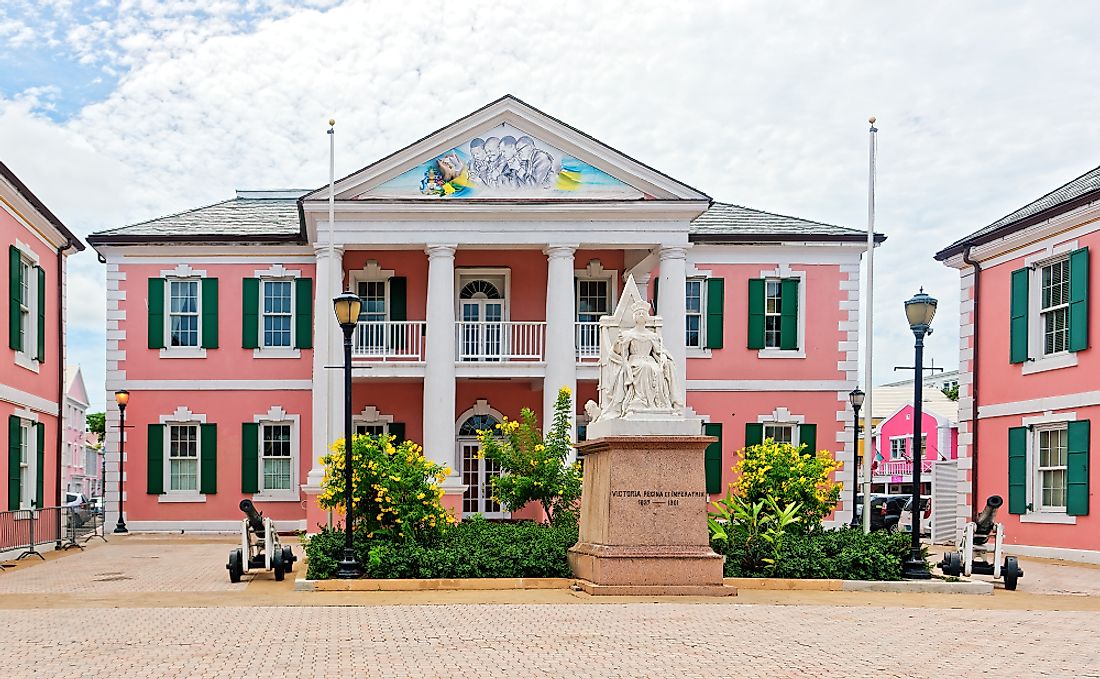What Type Of Government Does The Bahamas Have?

The Commonwealth of Bahamas is a parliamentary democracy under a constitutional monarchy with the Prime Minister as the head of the Government in the country. The monarchy has a bicameral parliamentary system which consists of two houses, the upper and lower houses. The head of government is elected as the majority party leader. The Great Britain appoints a ceremonial representative called a Governor-General who is constitutionally a member of parliament but does not participate in the day-to-day running of the legislature. The Bahamas has 21 administrative districts with Nassau as the Capital and New Providence as the biggest city. The constitution of July 10, 1973, governs the country.
Executive Branch
The Bahamas has a constitutional monarchy with a parliamentary system of government based on the Westminster. Queen Elizabeth II, serves as the nominal Chief of State, is represented ceremonially by the Governor-General who in turn is advised by the Prime Minister and the cabinet. In the Bahamas, the majority party leader serves as both heads of government and Prime Minister. The Cabinet executes administrative duties and comprises of the head of government and ministers heading executive departments. The cabinet answers to the lower House of Assembly. Arthur Foulkes is the current governor-general while Perry Christies serves as the Prime Minister.
Legislative Branch
The Bahamas has a bicameral parliament consisting the House of Assembly and Senate. The 38 members of the House of Assembly are elected from every constituency to serve a five-year term. The government can dissolve parliament and call for elections any time. The lower house carries out legislative functions. It makes all the laws that govern the country. Finance bills are the only type of Bills introduced to the House of Assembly. Other Bills are introduced in either the Senate or the lower house. But for a bill to be considered an act, both houses must approve it. On the other hand, the governor-general appoints 16 members to serve in the Senate. These members include nine selected as per the consent of the Prime Minister's advice; four from the opposition; and three as advised by the Prime Minister and opposition leader. Since the Senate is not popularly elected, the constitution has to restrict the Senate powers. For example, if a bill passes the lower house twice and the Senate rejects it in both occasions, the House of Assembly can choose to bypass the Senate, send the bill to the governor-general for the final approval. If the Senate makes any amendment to the bill, the lower house must approve the changes.
The Judiciary Of the Bahamas
The Bahamas judicial system follows the English Common Law. The Legal Service Commission constitutes five persons headed by the Chief Justice. The Highest court is the Supreme Court and 12 justices serving it comprise of the Chief Justice and five judges from the court of appeal. The Privy Council in London is the highest appellate court in the country. The Magistrate Courts listen to indictable matters and determine whether the accused should face trial in the Supreme Court or Court of Appeal. Civil cases are usually heard by the judge alone, and any appeal lies with the Supreme Court. On the advice of both the Prime Minister and opposition leader, the governor-general selects the chief justice. The judicial commission advises the governor-general on the appointment of other judges. The judicial system is independent of parliament and the executive.
Political Structure
A two-party system characterizes the political fabric of the Bahamas. The two parties dominating the country are the center-left Progressive Liberty Party and the center-right Free National Movement. Other parties like the Bahamas Democratic Movement, Democratic National Alliance, and the Coalition for Democratic Reform have been unable to win parliamentary elections.
Administrative Divisions Of the Bahamas
All the districts in the Bahamas are served by local government; except New Providence (contains 70% of the population) which is governed by the central government. The Bahamian Parliament enacted an Act that led to the establishment of Family Island Administrators, Local District Councilors, Local Government Districts, and Local Town Committees to govern the affairs of their respective districts with minimal interference from the Central Government. The Bahamas has 32 districts and elections are held every five years. 110 councilors and 281 towns Committee electives represent the various areas. They are responsible for the proper management and use of public funds in their individual constituencies.











